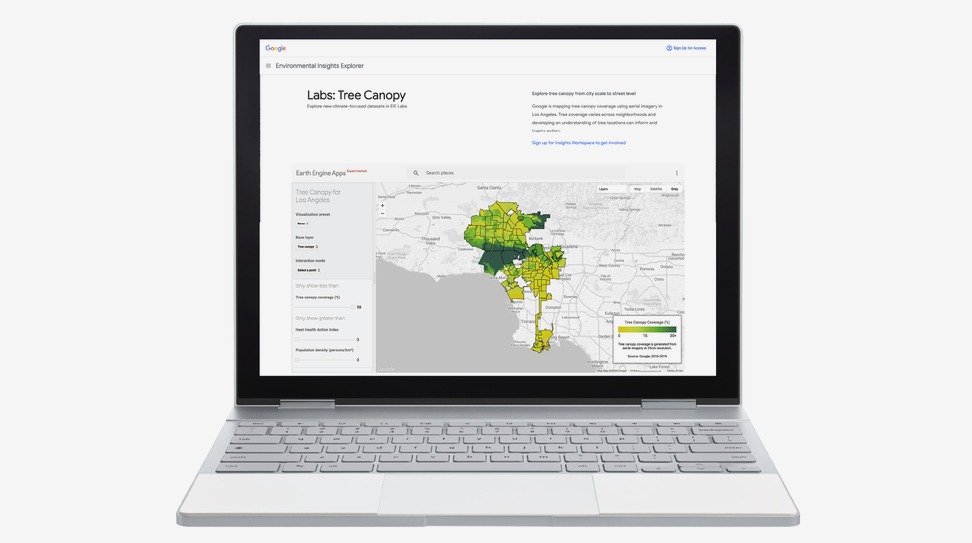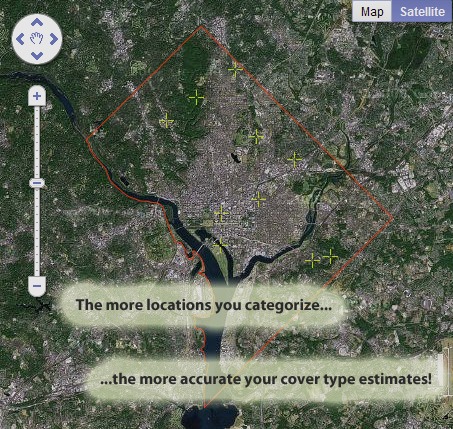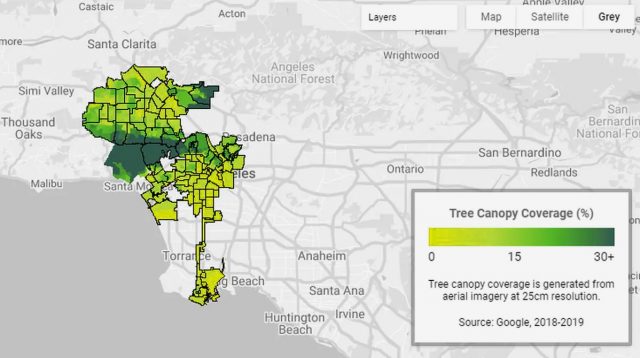Starting in Los Angeles, Google has created a new tool that they’re calling the Tree Canopy Lab in the effort to assist in cooling cities.
In November, Google announced its latest tool to help Los Angeles residents stay cool by helping plant more trees where they are needed most. Due to the condensed buildings and the asphalt, cities tend to trap heat a lot more than regional areas.
One way to help cool cities down is to plant more trees where there is room. The tech company hopes that their efforts can help cities like Los Angeles adapt to the warming world.
The Tree Canopy Lab analyses aerial images and utilities Google’s AI feature to accurately pinpoint areas that trees could be planted. The information collected is compiled on an interactive map with details regarding the neighbourhood’s population and vulnerability to higher temperatures.
Google hopes that by finding the neighbourhoods that are vulnerable, they can help cities and save lives. Los Angeles is just the start – city planners can use a form to express interest in this tool.
Rachel Malarich, city forest office in Los Angeles says that the tool will provide better accuracy for strategic investment when it comes to urban heat.

This tool can save cities time when taking inventory of their trees; a task often was undertaken by people. The map created by these workers utilises LIDAR technology which detects trees by a laser sensor. Malarich states that this process is extremely slow.
Google’s new tool, however, utilises the images that have already been created by the companies planes for Google Maps.
Google has found that over half of Los Angeles less than 10 per cent of their neighbourhood has tree shade. The entire cities average is just over 20 per cent. On top of this, 44 per cent of residents live in places of extreme heat risk.
In the past 50 years, Los Angeles heat waves have not only become more intense, but they’re longer and more frequent.
Rising temperatures cause more deaths than any other weather-related factor in the US. The high temperatures are extremely dangerous for cities due to the urban heat island effect. Urban areas can rise approximately 6 degrees Fahrenheit when they lack greenery.
There are a variety of ways that planting trees in these vulnerable neighbourhoods can cool them down. One way is that they provide shade for not only people but buildings. Another way is that, when temperatures rise, the trees will release moisture through evapotranspiration. This process acts the same way our bodies release sweat to cool down.

According to the EPA, this process can help lower the average temperature of summer by approximately nine degrees Fahrenheit.
On top of the high heat risks, it was found that these neighbourhoods tended to be more densely populated with residents. The ratio of people to trees was not high enough. However, these places that are at most risk have the least available resources to combat the issue of illness and death.
There was also another tool, created by American Forests, that was released recently that allows cities to generate a “tree equity score” by analysing the tree coverage, surface temperatures and data on demographics such as average income and race in the neighbourhood.
American Forests, an American conservation organisation, released this tool with the support of Microsoft in Rhode Island, the San Francisco Bay Area and Maricopa County, Arizona.
Due to systematic racism in the United States, historically these high-risk neighbourhoods are inhabited by people of colour. Some of the most vulnerable neighbourhoods in US cities today are the result of the policies that date back to the 1930s that policed the home loans and insurance of people of colour.
There are plans made by the City of LA to make these vulnerable neighbourhoods greener and assist in preparing the city for hotter weather. Their goal is to increase their tree canopy coverage in “low-income, severely heat impacted” areas of Los Angeles by fifty per cent by 2028.
An additional 61 million square feet of shade should be brought to Los Angeles thanks to the work of companies such as Google.



































